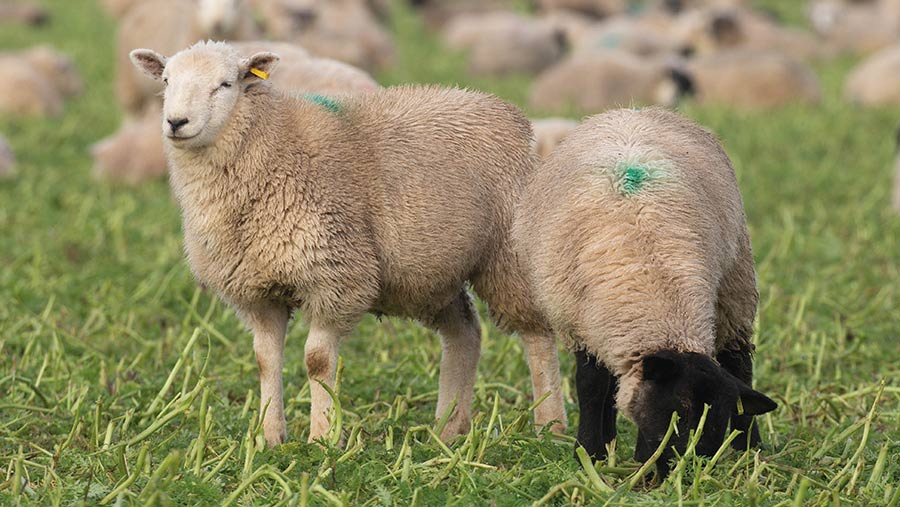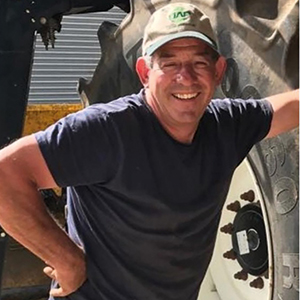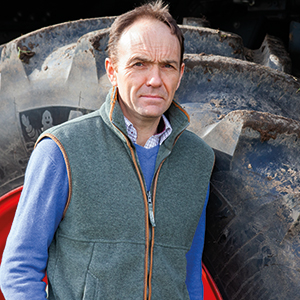Sustainable Farming Incentive: Two growers weigh up the pros and cons
 © Tim Scrivener
© Tim Scrivener Fears about how it would work in practice and doubts about the payment rates on offer saw the Sustainable Farming Incentive get off to a slow start, with just a couple of hundred farmers signing up in the first few months.
Since then, higher payment rates and a management fee have been unveiled, along with the promise of six new standards coming on stream later this year, as Defra looks to meet its target of 70% of farmers involved by 2028.
See also: Seaweed extract helps French grower cut costs and improve soils
In this article, Farmers Weekly speaks to two growers who have already considered the Sustainable Farming Incentive’s (SFI) place on their farms, as they look at new funding opportunities.
They are also weighing up if the forthcoming standards will appeal.
One has already signed up, while the other has not been tempted to enter an agreement.
Farmer 1: ‘No’ to signing up
Stephen Goodwin, Costow Farms, Northamptonshire

Stephen Goodwin © Base
Even though Stephen Goodwin’s regenerative approach means that Costow Farms in Northamptonshire more than meets the SFI intermediate soil standard requirements, he has not been tempted to enter into a three-year agreement to date.
The Base-UK vice-chairman, who farms 650ha of arable and 200ha of grass with his family at Marston St Lawrence, near Banbury, has transformed the mixed farm in recent years and put soil health at the heart of the operation – making it a prime candidate for the government’s first part of the Environmental Land Management scheme.
However, having studied the SFI soil standard in detail, his main concern is the lack of flexibility, especially around the grazing of cover crops, as livestock have been integrated into the arable rotation and are an important part of the farming system.
As such, sheep are used to graze the covers right down before drilling the following spring crop.
That means he can’t guarantee sufficient green cover in February, which is a requirement of the intermediate soils standard, as conditions might go against him.
“I understand why green cover at all times in important but there are times when the fields have been grazed off to almost nothing by February before spring barley is drilled,” says Mr Goodwin.
He highlights another example from this year – his stubble turnips didn’t do that well, following the very dry establishment period, so he has some land where sheep are currently being fed fodder beet.
They will remain on those fields until next month before the land receives muck and is then drilled with maize in April/May.
While he hopes that Defra would be flexible on the need for a well-established green cover in winter, he remains cautious.
“It is a stumbling block for us,” he adds. “We will keep reviewing the SFI and how it could work, but it doesn’t pay enough for us to change the way we farm.”
As Mr Goodwin started his regenerative journey 20 years ago, he is confident about the state of his soils and their ability to withstand weather extremes and capture nutrients.
“We direct-drill into chopped straw, use cover and spring crops and have livestock – so I’m not worried that our soils are deteriorating or at risk of erosion. Soil organic matter levels are around 6-7%.”
He also questions the value of having to test soil organic matter levels as part of the SFI, as any long-term changes take time to show up.
“Given the uptake figures, I’m certainly not alone in wondering whether it’s worth doing.”
Mr Goodwin’s other point is that he contract farms on a share-farming basis, so needs to understand that any SFI payment would come back into the contract farming agreement.
“It’s unlikely to happen here, but there will be instances where the landowner will benefit rather than the farmer.”
He is aware of the six new SFI standards announced at the beginning of the year and, as he hasn’t used an insecticide on the farm for some time, recognises that £45/ha on offer under the integrated pest management standard would be achievable immediately.
“Standards like this show that the SFI is going the right way and we will keep an open mind as new ones are launched,” he confirms.
The business already has a Countryside Stewardship agreement, so the considerable amount of hedging work undertaken at Costow Farms is included in the existing scheme, as are areas for pollinators and biodiversity, he adds.
Farmer 2: ‘Yes’ to signing up
Rob Waterston, Welford Estate Partnership, Berkshire

Rob Waterton © Jamie Santosh Photography
Signing up to the SFI intermediate soils standard last year, which pays £40/ha, was an easy decision for the AHDB’s Newbury Monitor Farm host and farm manager Rob Waterston.
Already committed to a wide rotation featuring both spring crops and cover crops, and on a mission to improve soil health at the Welford Estate Partnership, he found that the requirements for the standard mirrored his current farm practice.
“We were doing it anyway,” he says. “When we considered the detail of the scheme, it made sense for this business and validated the direction that we had been taking.
“It also went some of the way to plugging the gap that a reducing BPS has left.”
Changes introduced since 2015 on the 640ha farm have seen a gradual move to no-till, where conditions are right, and a reducing reliance on bagged inputs.
With soil health central to the farming system, straw is chopped and incorporated, while farmyard manure is also used to build organic matter.
Sewage sludge is applied on a rotational basis and soil testing is already carried out.
Some 231ha of cover crops are grown, many of which couldn’t be included in the farm’s Mid Tier Countryside Stewardship when it was set up in 2020.
“We could only get 88ha into the original agreement and we weren’t able to change it,” says Mr Waterston.
As a result, he put 633ha into the SFI intermediate soils standard, which amounts to £25,000, showing the contribution that alternative funding sources can make.
Having also committed to a carbon credits scheme, he is clawing back lost funding and will continue to investigate other income sources.
The cover crops at Welford are grazed and he recognises the importance of not overgrazing them as a condition of the SFI.
“Our aim is to eat one-third, trample one-third and leave one-third, so there should be enough green cover left,” he says.
The only action that he has had to add to meet the standard is the use of a soil score card. “We weren’t doing it but it’s a good discipline and straightforward to achieve.”
Mr Waterston has looked at some of the detail of the new standards and is tempted, but believes there is an element of risk in some of them that he will have to weigh up carefully.
“The payment of £45/ha not to use an insecticide is interesting, as we are already trying to do that. But it’s a big leap to say that we are not going to use them point blank.”
Likewise, the companion cropping payment of £55/ha is tempting, but can be tricky to achieve in practice.
“We grew a clover understorey in our beans one year, but then managed to kill it in the following wheat crop,” he recalls.
“We also have berseem clover companions in our oilseed rape, which looked wonderful in the autumn, but the sharp frosts we’ve had since then means that there’s nothing left now.
“The good news is that it has saved the use of a herbicide, but we no longer have the plant diversity in those fields. We need to understand how these unintended developments will be viewed by Defra.”
Mr Waterston acknowledges that the SFI is the right way to go and that the online application process is good, but will wait for more detail before committing to the new standards in the summer.
SFI: What’s coming next?
Six new standards have been announced and will open for applications later this year.
Existing SFI agreement holders can add them to their agreements, as well as adding land parcels. Some of the actions are rotational, so can be worked into the farm system.
The new standards are:
- Hedgerows
- Integrated pest management
- Nutrient management
- Arable and horticultural land
- Improved grassland
- Low-input grassland

